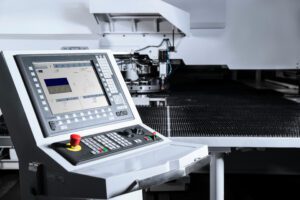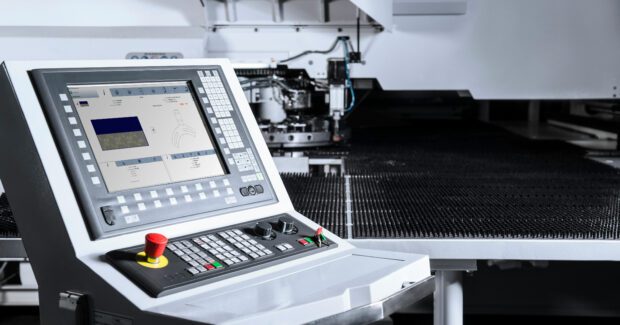Digitally Speaking, MES Systems Lead the way to More Streamlined Manufacturing Operations
With Industry 4.0 technologies such as Manufacturing Execution Systems the sky is the limit regarding the capture and use of data to build more efficient manufacturing systems.
Posted: December 20, 2022

It’s safe to say we have entered the digital age. From video streaming services such as Netflix to the advertisements that pop up in our social media feeds, data is being captured with each click of a mouse or that extra 30 seconds one lingers on an ad while reading a story on CNN.com. It’s hard to remember the days before we had lots of data at our fingertips as artificial intelligence (AI) has permeated every aspect of our lives.
Manufacturing has not been left out. In fact, in some ways, it’s leading the change.
In metal forming, we’ve embraced nesting systems in our CAD/CAM programs from early on, their simulation capabilities allowing us to visualize the finished assembly, saving significant time and costs during the manufacturing process. Still, overproduction continues to occur. Enter the Manufacturing Execution System (MES). At Lantek, our system is divided into four components, including MES for Workshop Stations and the MES Machine Data Capturing System. The two systems work together to track data collected through, say, a cutting operation with downstream mapping to capture the data. Let’s take a closer look at how MES systems can capture important data to help reduce overproduction.
Let’s say for example your company is making 100 assemblies for a customer. You’ve imported the assembly information into the system, programmed the operations and created the nest. The next step is routing. But you have two types of assemblies to be made. Part A must be laser cut, then sent to a bending process, to assembly and then to painting. Part B requires only cutting and assembly. Routing, or the order of things, begins when you’ve let the system know the part has been cut. After all parts have been cut, you realize about five parts in each lot are rejected. The rest go to bending. And the process continues. The system is capturing the data as it goes through each workstation and is updated by the operator. At the end of the operation, you have five scrapped parts which might not seem like a lot but multiplied by many operations it adds up.
MES Systems Saves Both Time and Costs
There are two ways to handle scraps: either wait for it to happen or proactively deal with it. For example, if 10 percent is your typical scrap rate, you can make 10 percent additional parts to accommodate for defective parts. Because you can track the process at every stage of rejection using the MES system, you don’t really need to plan for overproduction in future operations — rejection information is right at your fingertips. Prior to MES digitization, you couldn’t do this. Errors were typically caught at shipping each and every time. You are not just saving costs but time as well with an MES system. If you are cutting an additional 10 percent each time, you are going to spend 10 percent more in material, time, and material handling than you really need.
Let’s take this further with auto part reporting. Now that your machine is connected through the Open Platform Communications Universal Architecture (OPC UA), the interoperability standard for the secure and reliable exchange of data in the industrial automation space and other industries[1], the entire cutting operation is automatically reported so that when the system goes through the process again, it provides feedback on every operation from bending to cutting. The machine data can be tracked and synchronized with the MES data allowing you to track it all in real time without any operator intervention — for every single process that is run. The data is stored in the cloud for analytics which is a great place to start when evaluating preventative maintenance procedures.
The ability to connect via the cloud is especially beneficial for global manufacturing operations where an employee is operating a machine in Brazil while the engineer located in Bangladesh is visualizing the entire process based on the programming being done. Upon reviewing the analytics, he can alert the person in Brazil as to whether a nozzle should be replaced, or the amount of gas consumption used in a laser cutting operation. He can also notify the Brazilian operator when it’s time to order additional welding wires or change tools. This goes for material utilization as well. Many times, when you are using a combination of material types and sizes to complete an assembly or series of parts, it’s helpful for the programmer to see trends. The system can then suggest which material to use for a particular assembly based on the data, saving significant material and costs.
Speaking of those consumables, laser nozzles, welding electrodes and wires, tools, etc., they are easily and accurately managed as well through a digital system. Each consumable can be tracked from operation to operation noting the average time it takes before it wears or dies (five days, five years?) and providing important notifications as to when the devices need to be reordered.
Digitally speaking, we’re just on the cusp of Industry 4.0. The sky is the limit, quite literally, as to how much data we can capture, store and use to build more lean, efficient manufacturing systems across the globe.
End Note
[1] Definition of OPCÒ UA by the OPC Foundation.
Subscribe to learn the latest in manufacturing.


















